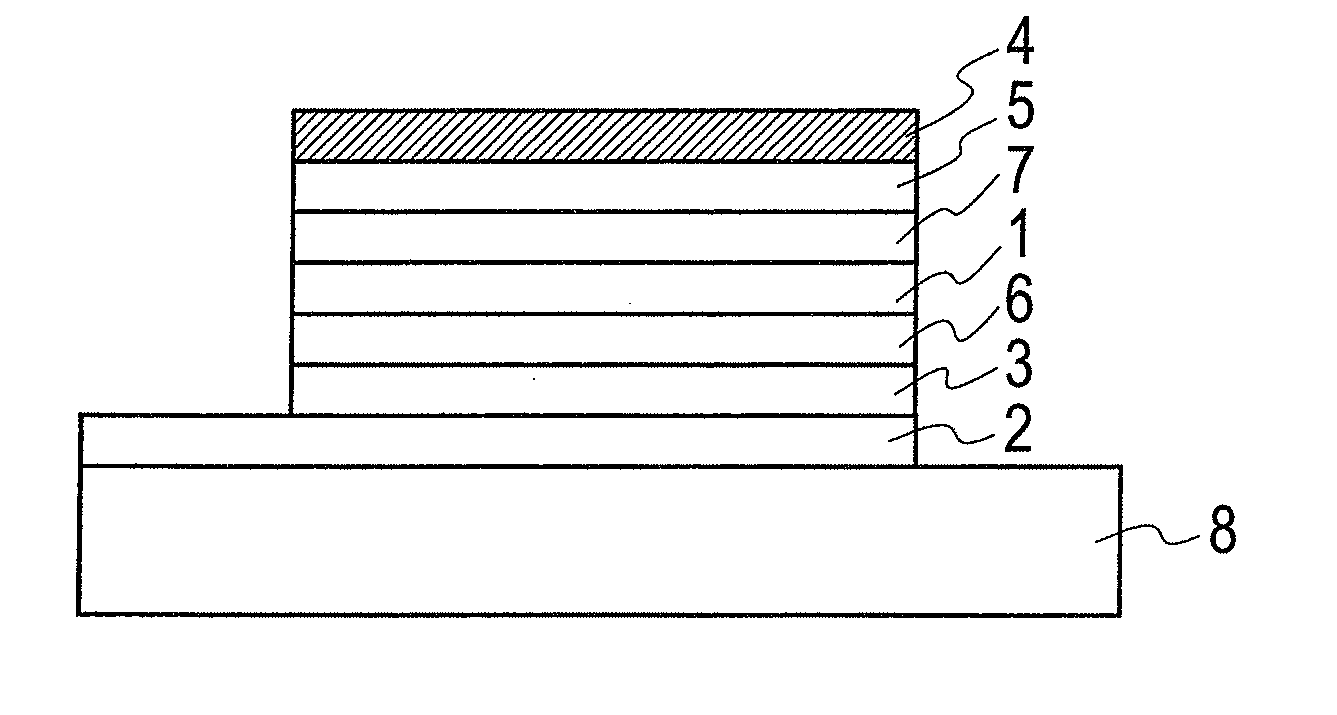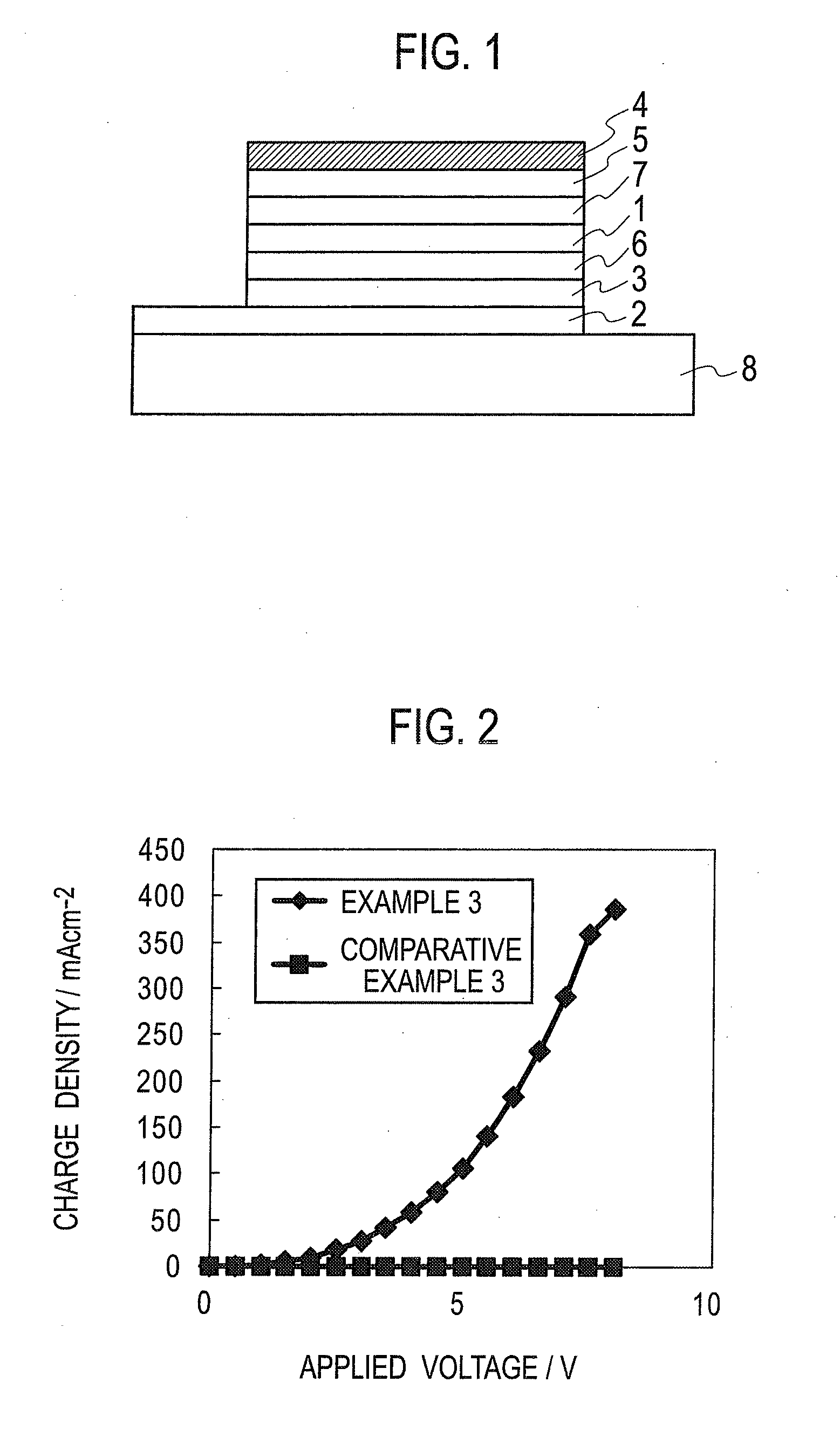Organic electronic material, polymerization initiator and thermal polymerization initiator, ink composition, organic thin film and production method for same, organic electronic element, organic electroluminescent element, lighting device, display element, and display device
a technology of organic electronic elements and initiators, applied in the direction of non-metal conductors, group 5/15 element organic compounds, conductors, etc., can solve the problems of low light emission efficiency and short element service life, difficult multilayering in polymer type organic el elements, and low light emission efficiency. , to achieve the effect of enhancing the productivity of organic electronic elements, reducing driving voltage, and prolonging the life of light emission
- Summary
- Abstract
- Description
- Claims
- Application Information
AI Technical Summary
Benefits of technology
Problems solved by technology
Method used
Image
Examples
synthesis example 2
Ionic Compound Synthesis Example 2
[0141]Synthesis was carried out in the same manner as in Ionic Compound Synthesis Example 1, except that potassium tris(trifluoromethanesulfonyl)methide of the Ionic Compound Synthesis Example 1 was replaced with lithium bis(trifluoromethanesulfonyl)imide. A target ionic compound B was obtained as a yellow powder. Yield: 85.9%.
[0142]The reaction scheme of this Synthesis Example is shown below.
synthesis example 3
Ionic Compound Synthesis Example 3
[0143]Potassium tris(trifluoromethanesulfonyl)methide (0.57 g, 1.34 mmol) was introduced into a pear-shaped flask, and the compound was dissolved in ethyl acetate (10 mL). An ethyl acetate solution (10 mL) of diphenyliodonium hexafluorophosphate (0.60 g, 1.33 mmol) was slowly added dropwise to the solution, and the mixture was stirred for one hour at room temperature. The organic layer was thoroughly washed with water, and then the solvent was distilled off. Thus, 0.90 g of a target ionic compound C was obtained as a white powder. Yield: 97.0%.
[0144]The reaction scheme of this Synthesis Example is shown below.
synthesis example 4
Ionic Compound Synthesis Example 4
[0145]Synthesis was carried out in the same manner, except that potassium tris(trifluoromethanesulfonyl)methide of the Ionic Compound Synthesis Example 3 was replaced with lithium bis(trifluoromethanesulfonyl)imide. A target ionic compound D was obtained as a white powder. Yield: 89.8%.
[0146]The reaction scheme of this Synthesis Example is shown below.
PUM
| Property | Measurement | Unit |
|---|---|---|
| temperature | aaaaa | aaaaa |
| temperature | aaaaa | aaaaa |
| temperature | aaaaa | aaaaa |
Abstract
Description
Claims
Application Information
 Login to View More
Login to View More - R&D
- Intellectual Property
- Life Sciences
- Materials
- Tech Scout
- Unparalleled Data Quality
- Higher Quality Content
- 60% Fewer Hallucinations
Browse by: Latest US Patents, China's latest patents, Technical Efficacy Thesaurus, Application Domain, Technology Topic, Popular Technical Reports.
© 2025 PatSnap. All rights reserved.Legal|Privacy policy|Modern Slavery Act Transparency Statement|Sitemap|About US| Contact US: help@patsnap.com



